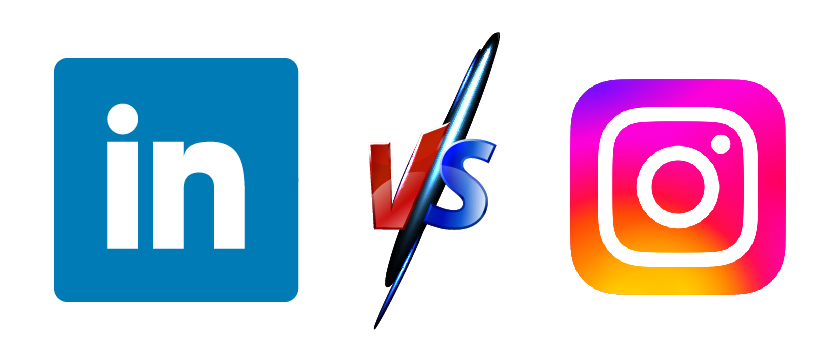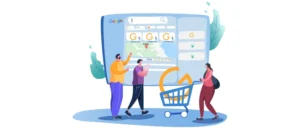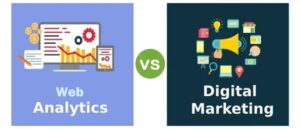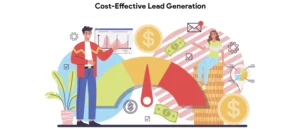Introduction
In the dynamic world of digital marketing, choosing the right social media platform is crucial for effectively reaching and engaging your target audience. LinkedIn and Instagram are two powerful platforms with unique strengths and user bases. Understanding when to use LinkedIn versus Instagram can significantly enhance your social media strategy and maximize your marketing efforts. This blog explores the distinct characteristics of LinkedIn and Instagram, guiding when to leverage each platform for optimal results.
Understanding the Platforms
LinkedIn: The Professional Network
LinkedIn is the world’s largest professional network, with over 700 million users. It is designed for business networking, professional development, and B2B marketing. LinkedIn is ideal for connecting with industry peers, showcasing professional achievements, and sharing business-related content. Key features include:
- Professional Profiles: Highlight work experience, skills, and endorsements.
- Company Pages: Promote business updates, job opportunities, and industry insights.
- LinkedIn Groups: Join discussions and share knowledge within specific industry communities.
- LinkedIn Learning: Access courses for skill development and professional growth.
Instagram: The Visual Storyteller
Instagram is a visually-driven platform with over a billion active users, primarily targeting younger demographics. It is perfect for B2C marketing, brand storytelling, and engaging audiences through visual content. Instagram’s features include:
- Photos and Videos: Share high-quality images and short videos.
- Stories: Post temporary content that lasts 24 hours, ideal for behind-the-scenes and real-time updates.
- IGTV: Upload longer videos for in-depth content.
- Reels: Create short, engaging videos similar to TikTok.
- Shopping: Tag products in posts for direct purchasing.
When to Use LinkedIn
- B2B Marketing: LinkedIn is the go-to platform for B2B marketing. If your business targets other businesses, LinkedIn provides a professional environment to connect with decision-makers and industry leaders. Use LinkedIn to share whitepapers, case studies, and industry reports demonstrating your expertise and thought leadership.
- Professional Networking: LinkedIn is unparalleled for building professional relationships and expanding your network. It’s an excellent platform for connecting with colleagues, mentors, and potential clients. To grow your professional network, regularly update your profile, engage with connections, and participate in industry discussions.
- Talent Acquisition and Recruitment: LinkedIn is a powerful tool for recruitment. Companies can post job openings, search for potential candidates, and even headhunt top talent. Job seekers can leverage LinkedIn to showcase their skills and connect with recruiters. Use LinkedIn’s recruitment tools to streamline your hiring process and find the best candidates for your organization.
- Thought Leadership and Industry Insights: Sharing insightful content on LinkedIn can establish you as a thought leader in your industry. Publish articles, share updates, and discuss industry trends and innovations. This enhances your professional reputation and attracts a following of like-minded professionals.
- Lead Generation and Sales: LinkedIn’s advanced search and targeting capabilities allow you to identify and connect with potential leads. Use LinkedIn’s Sales Navigator to find and build relationships with prospects. Share valuable content that addresses their pain points and showcases how your product or service can solve their problems.
When to Use Instagram
- B2C Marketing: Instagram excels in B2C marketing by connecting brands directly with consumers. If your business sells products or services directly to customers, Instagram is an ideal platform to showcase your offerings. Use high-quality images, engaging videos, and interactive stories to attract and retain customers.
- Brand Awareness and Storytelling: Instagram’s visual nature makes it perfect for brand storytelling. Use Instagram to share your brand’s story, values, and culture. Consistently post content that aligns with your brand identity and resonates with your audience. Utilize Instagram Stories and IGTV for deeper engagement and behind-the-scenes content.
- Influencer Partnerships: Instagram is a centre for influencers who can assist in spreading your brand’s message. Collaborate with influencers who align with your brand values and have a following that matches your target audience. Influencer partnerships can boost your brand’s credibility and reach a wider audience.
- Visual Content Promotion: If your marketing strategy relies heavily on visual content, Instagram is the platform for you. Showcase your products through beautiful photos, engaging videos, and creative content formats. Use features like Instagram Shopping to make it easy for users to purchase directly from your posts.
- Community Engagement: Instagram’s interactive features, such as comments, likes, and direct messages, foster community. Engage with your followers by responding to comments, sharing user-generated content, and hosting giveaways or contests. Building a strong community on Instagram can drive brand loyalty and advocacy.
Integrating LinkedIn and Instagram in Your Strategy
While LinkedIn and Instagram serve different purposes, integrating both platforms into your social media strategy can provide comprehensive coverage and maximize your reach. Here are some tips for leveraging both platforms effectively:
- Consistent Branding: Maintain consistent branding across both platforms to ensure a unified brand identity. Use similar visual elements, tone of voice, and messaging to create a cohesive brand experience.
- Cross-Promotion: Promote your LinkedIn content on Instagram and vice versa. For example, share a behind-the-scenes Instagram Story about a new blog post on LinkedIn. This will drive traffic between the platforms and keep your audience engaged across multiple touchpoints.
- Tailored Content: Customize your content for each platform. Share professional, long-form content and industry insights on LinkedIn, while using Instagram for visually engaging, shorter content. Tailoring your content ensures it resonates with the specific audience on each platform.
- Analytics and Optimization: Analytics tools track performance on LinkedIn and Instagram. Monitor key metrics such as engagement rates, follower growth, and click-through rates. Analyse the data to understand what works best on each platform and optimize your strategy accordingly.
Conclusion
LinkedIn and Instagram each offer unique advantages for different aspects of social media marketing. By understanding when to use LinkedIn and when to leverage Instagram, you can create a more effective and holistic social media strategy. Use LinkedIn for professional networking, B2B marketing, and thought leadership while harnessing Instagram for brand storytelling, B2C marketing, and community engagement. Integrating both platforms will help you reach a broader audience and achieve your marketing goals more effectively.
To learn more or to acquire our services, please contact us at info@paypercampaign.com





